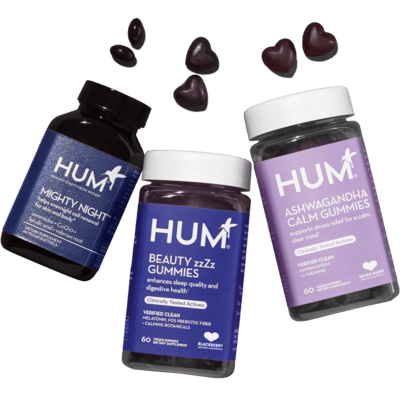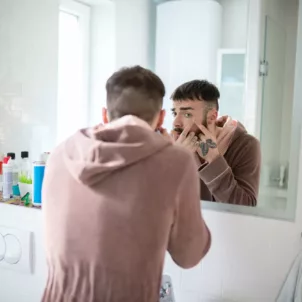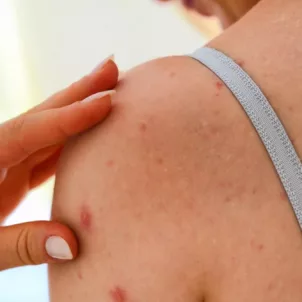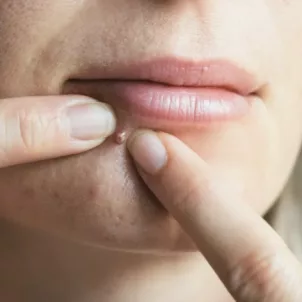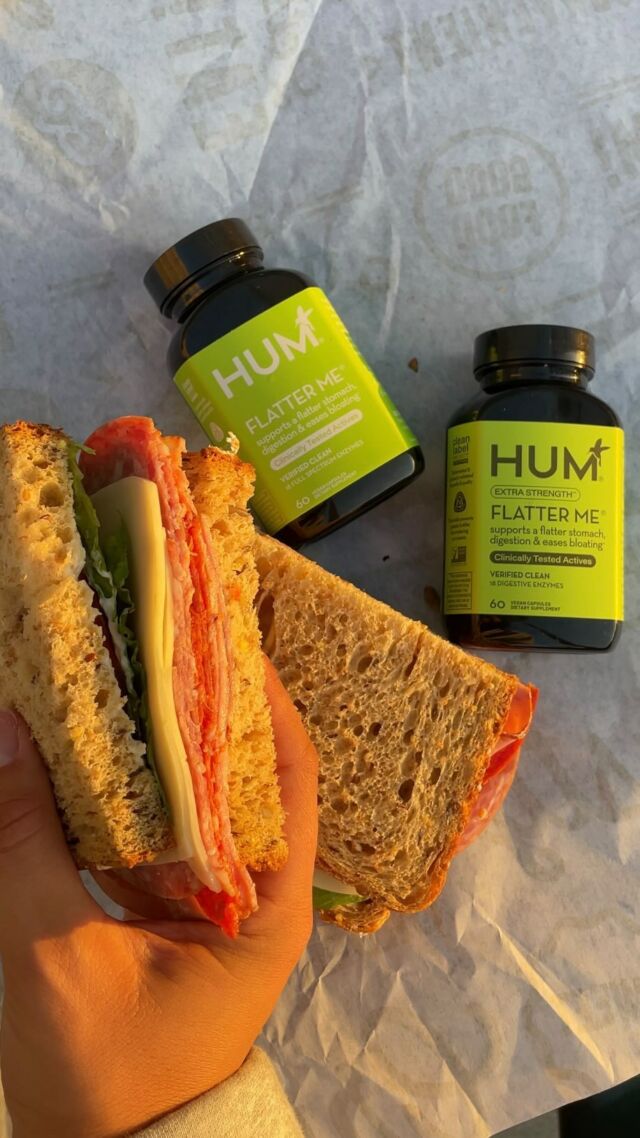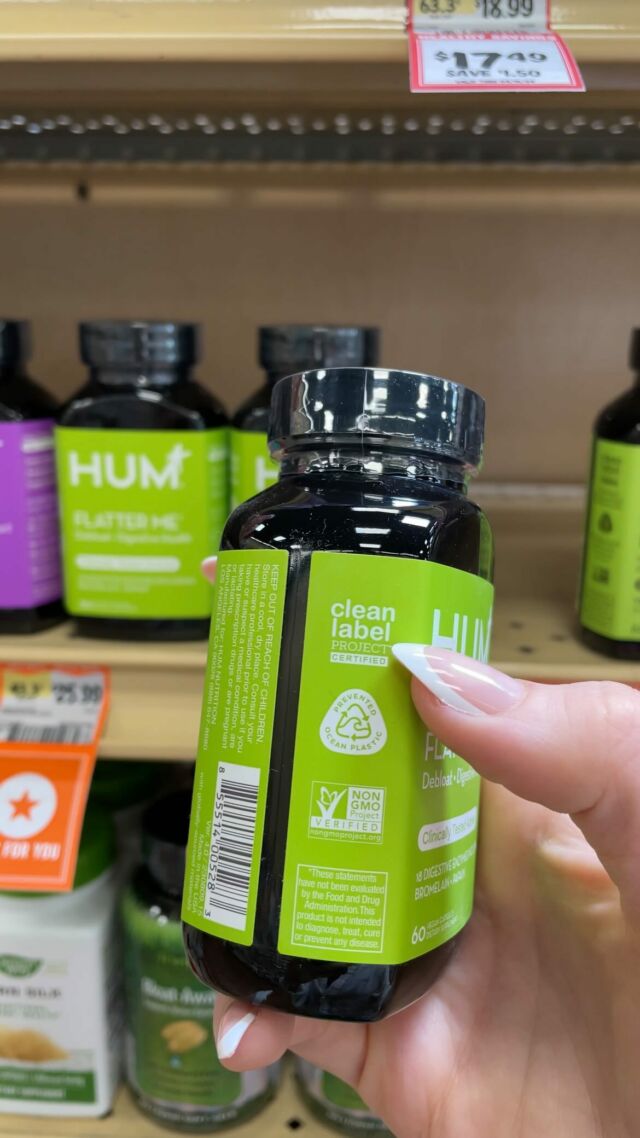Social media is obsessed with fungal acne—but what is it? A dermatologist breaks down everything you need to know about this trending skincare topic.
So you’re dealing with new breakouts, but they aren’t going away no matter what you do. If this sounds familiar, you might be dealing with fungal acne. It’s often confused with traditional acne, but it won’t respond to acne medication (think: salicylic acid face washes and benzoyl peroxide spot treatments). That’s because it’s not a classification of acne at all—it’s actually an infection of the hair follicle (known as folliculitis) caused by an overgrowth of yeast.
Despite claims on TikTok that fungal acne breakouts aren’t treatable, they actually are. The key is to correctly identify the skin concern first, and then treat it appropriately. HUM tapped Dr. Marisa Garshick, board-certified dermatologist in New York City to demystify the trending skincare concern. From what it is to what it looks like to how to treat it, she answers every question you might have about fungal acne. Step away from the pimple patches, and read up on why this skin concern won’t respond to your typical acne treatments.
What Is Fungal Acne?
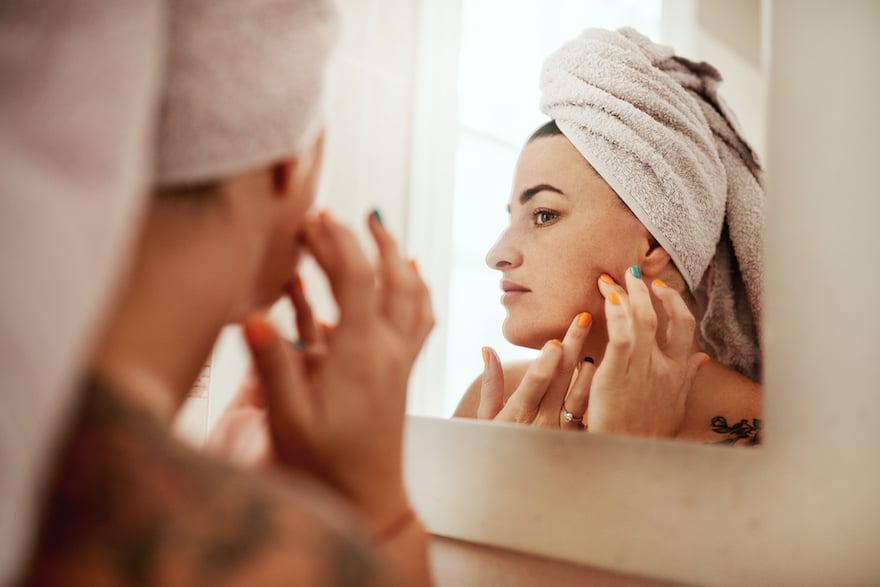
Despite its name, fungal acne isn’t actually a type of acne. “Fungal acne refers to a medical condition known as pityrosporum or malessezia folliculitis, as it is named for the yeast that causes it: malessezia furfur,” Garshick explains. “Pityrosporum folliculitis is due to the overgrowth of a normal yeast that lives on the skin, known as malassezia, which can lead to inflammation of the hair follicle.”
But what causes fungal acne exactly? There are a few different factors that can lead to an overgrowth of yeast. “It’s more common in individuals who are immunosuppressed or immunocompromised and may be more likely to occur in high heat or humid environments,” she says. “It can also occur in individuals who are currently taking or recently took antibiotics.” It is also common in people who wear tight clothing, such as workout clothes (especially if you’re guilty of sitting in your sweaty outfit after your workout is done).
And while you might assume fungal acne symptoms include breakouts on your face, Garshick says that isn’t always the case. “Fungal acne often occurs on the chest, back, shoulders and hairline,” she says. “While it can involve the face—especially on the forehead along the hairline—it does not primarily involve the face as we often see in bacterial acne.” So if you’re dealing with red bumps on your body, you might be dealing with fungal acne.
What Does Fungal Acne Look Like?
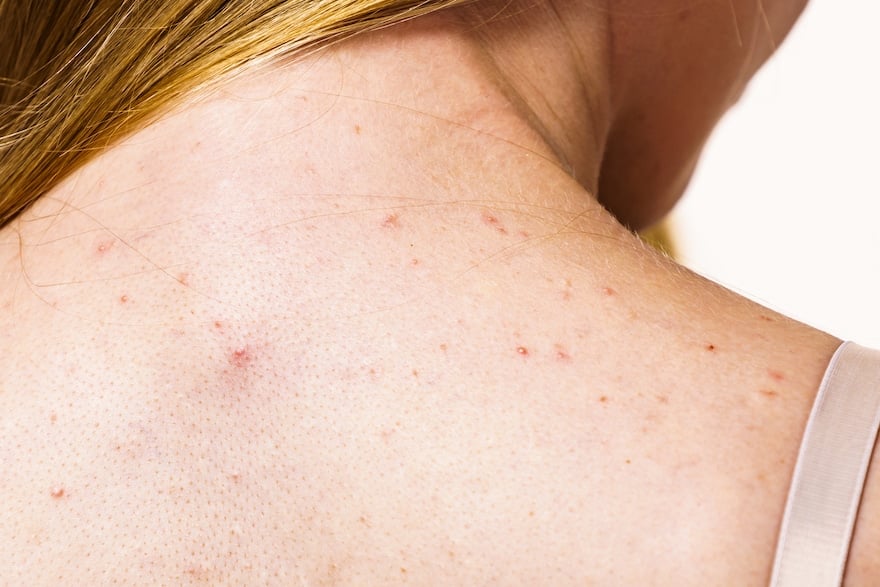
The key to treating fungal acne is identifying it first. Fungal acne is described as “monomorphic red papules and pustules,” says Garshick, which means all the bumps appear similar to each other. You may experience some bumps that have a bit of yellow-ish pus, but typically you won’t experience white heads or blackheads you often get with bacterial acne. (If you do see pus-filled breakouts, don’t pop your pimples—it will only do more harm than good.)
The uniformity of its bumps differentiates fungal acne from the bacterial acne we’re familiar with. “Traditional acne tends to appear with different types of bumps including papules, pustules, cystic breakouts and nodules and may also appear with comedones which are the blackheads and whiteheads,” Garshick says. “The bumps in pityrosporum folliculitis may also be associated with itching, which is not typical of traditional acne.” Note: While fungal acne may itch, it won’t be painful (like deep, cystic acne). If you’re experiencing pain, consult a board-certified dermatologist ASAP.
How to Get Rid of Fungal Acne
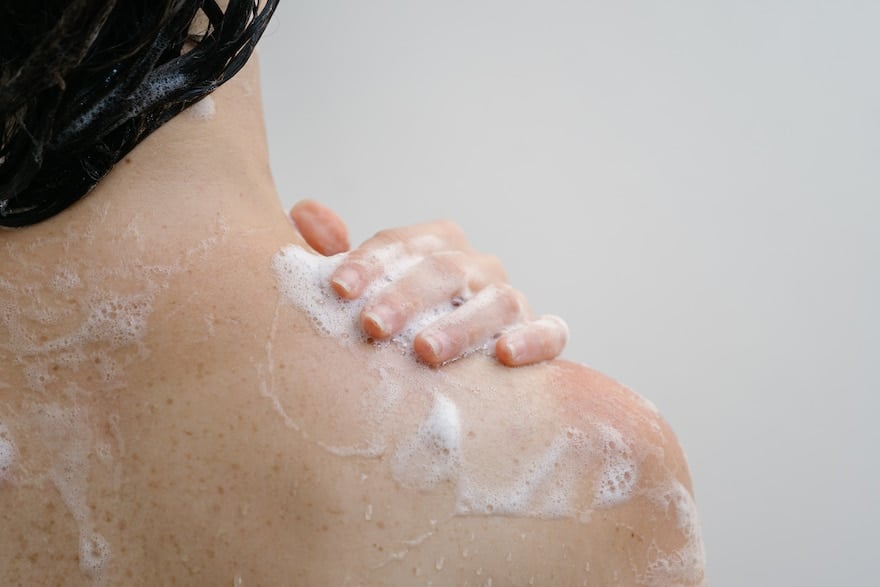
Here’s the good news: If you’re dealing with fungal acne, it’s completely treatable. The different types of treatments include a topical cream or gel, a shampoo (which can also be used as a body wash, or a pill. What treatment you need depends on the severity of your breakouts, which is why it’s best to seek out help from a professional first. They may prescribe you medication or advise you to get something over-the-counter.
These treatments are different from the familiar acne medications you’ve seen before. “[Fungal acne] treatment typically includes topical or oral antifungal medications, as opposed to traditional acne-fighting ingredients such as retinoids, salicylic acid, or benzoyl peroxide,” Garshick says. (However, it’s still a good idea to have these in your rotation to deal with bacterial breakouts, should they occur.)
Fungal Acne Products
When shopping for fungal acne products, Garshick says there are a few key ingredients to look for. “Over-the-counter shampoos include those that contain ketoconazole (such as Nizoral), selenium sulfide (such as Selsun Blue), or pyrithione zinc (such as Dove Dryness and Itch-Relief Shampoo). Psst: Head & Shoulders Dandruff Shampoo contains pyrithione zinc too. You’ll notice that these treatments include dandruff shampoos—that’s because dandruff is also caused by fungi. All of these antifungal products will help treat the root cause of your fungal acne (plus they can be used as body washes too).
“With the shampoos, it’s best to apply to the general affected area, leave it on for five to 10 minutes, and then rinse off,” Garshick says. If you wash it off too fast, then the active ingredients won’t have time to fight against the infection. If you’re looking for a topical cream of gel, Garshick says it’s best to speak to a board-certified dermatologist to determine the best course of action.
- Nizoral Anti-Dandruff Shampoo – $12
- Selsun Blue Medicated With Menthol Dandruff Shampoo – $9
- Dove Dryness Itch-Relief Dandruff Shampoo -$5
- Head & Shoulders Classic Clean Dandruff Shampoo – $6
How to Prevent Fungal Acne
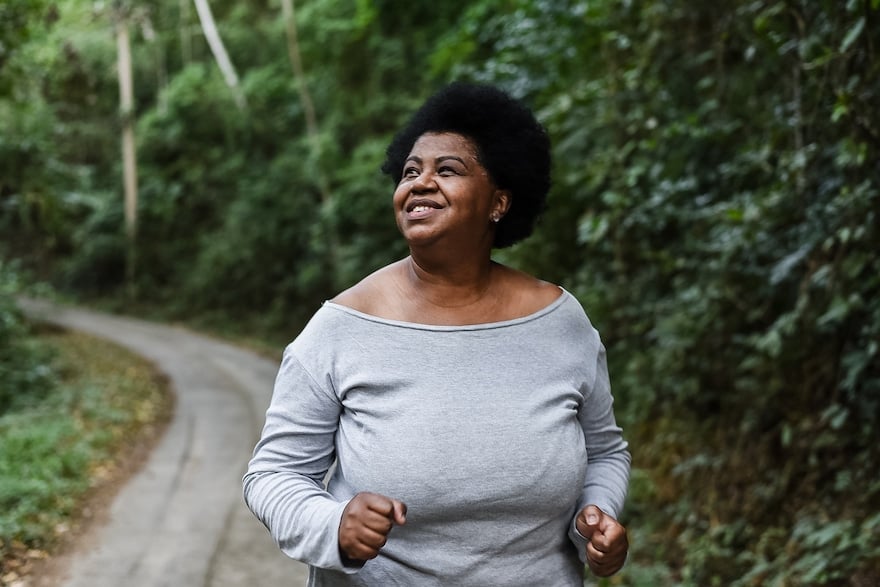
While there’s no true way to prevent fungal acne from happening, there are a few lifestyle changes you can make to minimize your chances of developing it. Keeping your skin dry and clean, for example, can help. Try using an antiperspirant (you can use them on underarms and also on hands and feet if necessary), which will block the pores from releasing sweat. Wear breathable clothing (opt for loose-fitting clothes made of cotton, linen, or a moisture-wicking fabric) and avoid tight-fitting materials and synthetic fibers (think: nylon, rayon, or silk). Another tip? Avoid spicy foods. When your system processes hot foods, your internal body temperature raises, causing you to sweat more. Same with caffeine, which means it might be wise to skip your morning cup of coffee if you’re worried about sweating. If you workout, take your sweaty clothes off right away when you’re done—no matter how tempting it may be to keep going with your day. It can also be helpful to use a salicylic acid cleanser in your shower in addition to a dandruff shampoo to remove excess dirt and oil from the skin.
